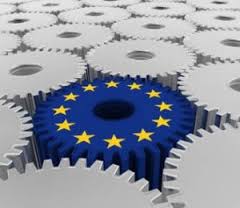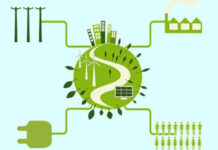The increase in electrification of services such as fast charging of electric cars and distributed renewable generation centers, puts a strain on the strength and efficiency of the networks themselves. This is compounded by the often unpredictable effects of extreme weather events, increasing in areas previously considered not at risk due to the effects of the climate crisis.
To meet these new system needs and waste as little energy as possible, technology can do a lot by achieving predictive network optimization. Amir Cohen, CEO of EGM, exlpain us how his company developed a pilot project with the Israel Electric Corporation. The project demonstrated how data processing with IT intelligence can increase the capacity of the power grid to decrease congestion and reduce the waste of renewable energy all without implementing unnecessary new infrastructure.
-
Why fast-charging EVs could be a challenge for electric grids

Fast charging will be key to accelerating the transition to zero-carbon transport by helping Electric Vehicle chargers match the speed and convenience of conventional petrol pumps. Europe saw a massive 90% increase in bigger, faster direct current (DC) chargers just last year. Yet fast chargers can also cause ‘harmonic distortion’ where they emit high-frequency waves that disturb the normal ebb and flow of alternating current (AC) across the power grid, potentially reducing the quality of power supplied to millions of homes and businesses. The concentration of fast chargers in locations such as service stations could also cause hotspots of ‘harmonic pollution’, contaminating the power supply and damaging nearby distribution grids and electrical devices over a wide area. Harmonic distortion can cause many problems from torque pulses in motors to misfiring of the variable-speed drives that regulate machinery speeds, causing vital medical or industrial equipment to suffer damage or reduced lifespans. It could also cause network operators to inadvertently breach EU power quality limits such as EN50160.
New, green appliances such as EV fast chargers and heat pumps exhibit different ‘load profiles’, or patterns of power use, to conventional devices and distribution grids weren’t designed for them. Successfully and seamlessly integrating these devices into the grid will necessitate real-time visibility of distribution networks, enabling operators to maintain power quality by constantly monitoring and managing demand at source. Yet network operators currently have little visibility of distribution grids and therefore little ability to stop the discharges from millions of EVs and other devices polluting our power quality.
New ‘multi-sensing’ grid monitoring systems now use sensors and sophisticated data analytics to provide a rich, real-time window into power quality across distribution grids, creating smart grids that can predict and prevent harmonic pollution at source. These systems can detect errors in voltage or current levels of less than 1% and even record the waveform or shape of current and voltage cycles to help continuously keep networks within power quality limits. The technology can monitor and analyse over 60 electrical, physical, and environmental parameters to identify any factors behind reduced power quality from voltage drops to momentary events such as objects touching the line.
-
How are the limits of grids in weather events caused by the climate crisis? Could smart grids be an opportunity?
The rise in record-breaking extreme weather events poses a growing threat to electric grid security with a recent report finding that extreme weather is now the biggest threat to utilities and networks. And the expansion of feeder lines enabled by distributed energy sources creates wider vulnerabilities for the grid. At the same time, the electrification of new sectors from transport to manufacturing means the effect of any network disruption will be multiplied.
Extreme weather events can affect everything from power quality and reliability to availability. Objects such as trees falling on the lines or two-phase short circuits caused by high wind can reduce power quality, affecting the performance of the grid and nearby electrical appliances from medical to industrial equipment. Severe heatwaves can also cause lines to overheat, lowering their current-carrying capacity and even causing fires. Major events from storms to heatwaves have also caused widespread power outages.
As power grids face an increasingly volatile climate, every parameter from temperature to power quality will need to be monitored and managed in real-time across end-to-end grids. Yet many existing grid monitoring methods involve either physical patrols, retrospective data analysis or real-time monitoring of just a few specific parameters like current. And utilities currently have little to no visibility of the distribution networks that are increasingly vulnerable to extreme weather events. They also cannot detect the location of faults.
Pioneering grid-monitoring systems now enable real-time location-based fault detection to detect the immediate time, place and impact of extreme weather events and even propose solution. This eliminates the need for physical network patrols, enabling human resources to be more strategically targeted. These systems can analyse common causes of weather-related issues from power outages to harmonic distortions to inform more resilient networks. Multi-sensing technology can now analyse over 60 parameters from voltage to current and temperature, giving a full-spectrum picture of the impact of weather events across everything from power quality to reliability. They can even enable dynamic line rating where weather forecasts are combined with sensor data from the grid, helping adjust grid capacity to weather conditions in real-time. Ultimately, this data could be combined with AI to create smart ‘learning’ networks that grow progressively smarter from each extreme weather event.
-
How about the pilot project in Israel?
Many networks set over cautious capacity limits that causes congestion, drives unsustainable demand for more power grids and wastes enormous renewable energy potential. For example, grid operators currently rely on rough estimates based on limited factors such as windspeed to estimate the maximum current that overhead power lines can carry without overheating. They are therefore failing to harness the higher thermal capacity of transmission lines during cooler weather to carry more clean energy to households.
A pilot project with EGM and the Israel Electric Corporation has demonstrated how smart data can increase power grid capacity to relieve congestion and reduce curtailment of renewable generation without unnecessary new infrastructure. The pilot saw the world’s first deployment of multi-sensing systems on transmission lines to enable dynamic line rating, which allows power flows to be safely increased during cooler conditions without exceeding safe temperature limits.
The technology was operational within minutes of setup and analyses data on over 60 parameters, from voltage to temperature, helping accurately predict the maximum potential capacity of power lines several days ahead. This will help operators harness favourable weather conditions to safely integrate more clean power into the grid without unnecessary extra infrastructure. By unlocking spare capacity on long-distance high-voltage transmission lines, this could remove the need to curtail faraway renewable generators.
The same ‘multi-tasking’ technology can also use feeder or meter sensors to identify the site and source of power loss or theft across transmission and distribution grids and even find common causes of faults across multiple sites, helping reduce electricity waste. The grid-monitoring platform can also accurately analyse load measurements from feeder lines to pinpoint opportunities for ‘load-balancing’ between parallel power lines, increasing the combined capacity of the network. Ultimately, smart grids predictively optimised to boost capacity and conserve power will provide the most cost-effective way of integrating renewables into the grid.
Per ricevere quotidianamente i nostri aggiornamenti su energia e transizione ecologica, basta iscriversi alla nostra newsletter gratuita
e riproduzione totale o parziale in qualunque formato degli articoli presenti sul sito.



















